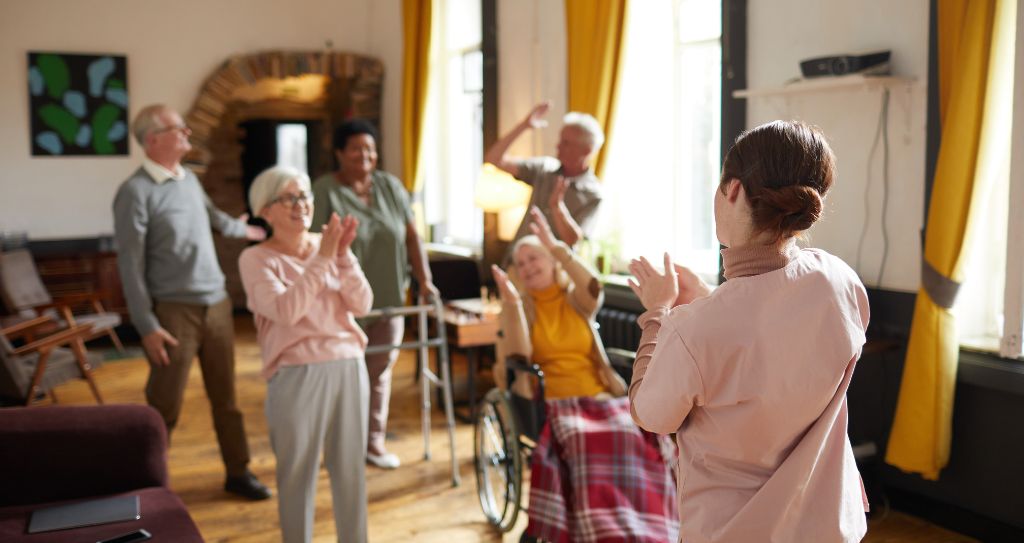Although assisted living is highly recommended by experts, for many valid reasons, transitioning to an assisted living lifestyle may not be as easy as it seems. It is important to acknowledge that sometimes this move can evoke strong emotions, that may include rejection, frustration, and a sense of abandonment. At the end of the day, the change entails leaving behind the familiar and facing the fear of being forgotten or cast aside.
These feelings are entirely natural, but it’s essential to address them with empathy and understanding as individuals begin to navigate this significant life change. The decision to move into assisted living is a significant event, whether it’s for yourself or a loved one.
What are the benefits of assisted living?
Assisted living offers a range of benefits for individuals who choose to reside in these communities. These benefits can significantly improve the quality of life for residents and provide peace of mind for their families.
According to the US News Health website, assisted living has many advantages, the article mentions 4 main benefits, quote:
- Assistance with the daily tasks of living, like cooking, cleaning, and doing laundry.
- Educational and cultural events.
- Medication assistance and management.
- Recreational opportunities, including games and field trips.
Other benefits of assisted living
Assisted living communities typically provide well-balanced meals tailored to residents’ dietary needs and preferences. This can be especially beneficial for individuals who have difficulty cooking or maintaining proper nutrition.
Residents are relieved of household chores, such as cleaning, laundry, and home maintenance. This frees up time and energy for more enjoyable activities and pursuits.
Many facilities offer transportation services, ensuring that residents can easily access medical appointments, go shopping, or enjoy outings and social events without needing to rely on family or friends.
How to move to an assisted living community
The consideration of assisted living often revolves around the need for increased support, improved quality of life, and safety. The thought of assisted living may arise also, from challenges related to aging, declining health, or a desire for a more supportive environment.
It may seem like a difficult process, however, with proper planning and gaining a better understanding of the process, it can become a smooth and more comfortable experience. These are the best steps to transition into assisted living:
Start with open communication
The first step in transitioning to assisted living is having an open and honest conversation with the person who will be moving. Discuss the reasons for the move and the potential benefits. Emphasize that assisted living can offer a safer and more supportive environment while still promoting independence.
Every individual’s needs are unique, so it’s essential to assess what level of assistance is required. Consult with healthcare professionals, such as doctors or geriatric care managers, to determine the specific care needs, including medical, physical, and emotional support.
Tour assisted living communities
Research and visit several assisted living communities in your desired area. Consider factors like location, amenities, staff-to-resident ratio, cleanliness, and overall atmosphere. Make a checklist to help you compare and evaluate each facility.
Assisted living can be expensive, so it’s crucial to create a comprehensive financial plan. Consider your income, savings, long-term care insurance, and Medicaid eligibility. Moving to a smaller living space may require downsizing. Start by decluttering your current home, and identifying what items to keep, donate, or sell.
Review and update important legal documents, such as wills, power of attorney, and healthcare directives. Ensure that someone you trust has access to these documents. Additionally, inform relevant parties, like banks and utility companies, about the upcoming move and change of address.
Packing and moving
Hiring professional movers or seeking help from family and friends can make the transition process more manageable. Pack essential items and sentimental belongings to make the new space feel like home.
Once you’ve moved to the assisted living community, take time to get acclimated. Attend orientation sessions, meet fellow residents, and explore the facilities. Encourage participation in activities and social events to build connections.
Make your new living space comfortable and familiar by adding personal touches. Bring cherished photos, decorations, and furniture to create a warm and inviting environment.
It’s natural to experience a period of adjustment after the move. Feelings of nostalgia, loneliness, or uncertainty may arise. Assure yourself or your loved one that these feelings are normal and that they will diminish over time.
How to adapt to an assisted living community
It’s natural to experience a period of adjustment after the move. Feelings of nostalgia, loneliness, or uncertainty may arise. Assure yourself or your loved one that these feelings are normal and that they will diminish over time. Some important ways to adapt to an assisted living community are:
Stay Connected: Maintaining relationships with family and friends is crucial during this transition. Regular visits, phone calls, and video chats can help combat feelings of isolation and ensure a strong support network.
Engage in Activities: Participating in the activities and programs offered by the assisted living community can enhance one’s quality of life. These activities provide opportunities to socialize, learn new skills, and stay active.
Regular Assessments: Assisted living communities typically conduct regular assessments of residents’ needs. Be proactive in communicating any changes in health or preferences to the staff to ensure continued quality care.
Support Groups: Consider joining a support group for residents or families in similar situations. Sharing experiences and advice with others can be comforting and helpful.
Reevaluate as Needed: Periodically review the decision to live in assisted care. Needs and circumstances can change over time, and adjustments may be necessary. Be open to exploring other options if they better meet evolving needs.
Transitioning to assisted living is a significant life change. It can be a positive step toward enhanced quality of life and well-being. Open communication, thorough research, financial planning, and emotional support are key components of a successful transition. Remember that this is a journey, and it’s normal to experience a range of emotions along the way.
Whether driven by age-related challenges, declining health, or the pressing need for a nurturing and supportive community, this transition is laden with emotional and logistical complexities that warrant deep consideration.


